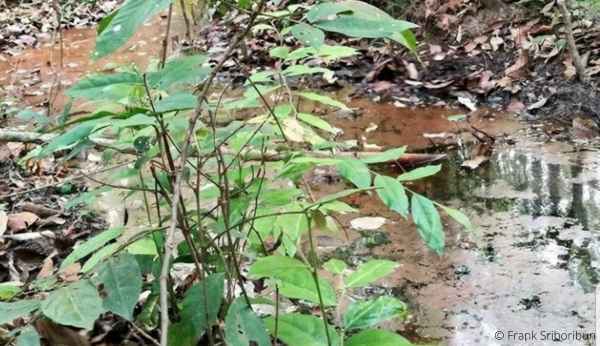Where do betta fish live in the wild

credit: Frank Sriboribun
Betta fish, commonly seen gracing enthusiasts’ ornate aquariums, captivate with their vivid colors and elegant fins. Popularly known as Siamese fighting fish, these creatures are often misconceived as simple decorative pets suited for small bowls or vases. However, the true story of bettas begins far from the confines of glass tanks in the vast, dynamic ecosystems of Southeast Asia. This post delves into wild betta fish’s natural origins and behaviors, uncovering a world vastly different from the one typically presented in pet stores.
Wild betta fish hail from the tropical waters of Thailand, Cambodia, Laos, and Malaysia—regions known for their rich biodiversity. Unlike the artificially enhanced colors seen in domesticated bettas, wild bettas blend more naturally into their environments. These fish are part of a larger genus that includes many species, some of which remain relatively unknown to the casual aquarist. Exploring these origins enriches our understanding and highlights betta fish’s adaptability and resilience in diverse habitats.
| Region | Some Common Wild Betta Species |
|---|---|
| Thailand | Betta splendens (Siamese fighting fish), Betta smaragdina (Emerald betta), Betta imbellis (Peaceful betta) |
| Cambodia | Betta stiktos, Betta siamorientalis |
| Laos | Betta falx, Betta simplex |
| Vietnam | Betta mahachaiensis, Betta prima |
Wild Betta Characteristics
The wild relatives of the domestic betta are generally less conspicuous, exhibiting subdued hues that serve as camouflage rather than decoration. Among the Betta genus, the splendens complex is perhaps the most famous, consisting of species like Betta splendens itself and its close relatives, which share similar morphological and behavioral traits. In contrast, species found on the islands of Borneo and Indonesia, such as Betta macrostoma, showcase different adaptations to their unique environments.
Habitat Types
In the wild, bettas inhabit shallow, warm waters like rice paddies, swamps, and slow-moving streams. These habitats are often low in oxygen, which has led bettas to evolve a labyrinth organ—a specialized part of their respiratory system that allows them to breathe air directly from the surface. This adaptation is crucial for survival in stagnant waters that heat up quickly under the tropical sun, reaching temperatures between 74°F and 85°F.
- Warm, tropical waters: Bettas need the temperature to stay within a comfortable range for their health.
- Shallow depth relates to their ability to gulp air from the surface when needed.
- Dense vegetation: Plants offer hiding places, a source of food, and even places for bettas to build nests.
- Tannins: As leaves and other organic matter decay in the water, they release tannins. These have a slightly brown tint but provide health benefits for bettas.
Wild Betta Behavior
Wild bettas are known for their complex behaviors, especially regarding territory and breeding. Males are fiercely territorial, often engaging in displays of fin spreading and color flaunting to deter rivals and attract mates. The species can be divided into two main reproductive groups: bubble-nesters and mouth-brooders. Bubble-nesters, like Betta splendens, create floating nests of air bubbles to protect their eggs and fry, while mouth-brooders, such as Betta macrostoma, carry their offspring in their mouths to ensure their safety.
Other Inhabitants and Environmental Interactions
Bettas share their natural habitats with various other species, including gouramis, rasboras, and barbs. These co-inhabitants often play a role in the dynamics of betta behavior, influencing everything from territorial disputes to breeding success. The dense vegetation and organic materials found in these waters provide hiding spots and breeding grounds for bettas and contribute to the ecological balance by offering shelter and resources to other species.
- Rice paddies: While man-made, these shallow, flooded fields provide a perfect home for bettas.
- Ponds and swamps: Lush with vegetation and teeming with insect life, these slow-moving waters suit bettas well.
- Slow-moving streams: The gentle flow of water is important, but some areas with low oxygen have led bettas to adapt by breathing air directly from the surface.
Reproduction Details
Reproductive strategies among wild bettas are fascinating and varied. Bubble-nesters guard their offspring until they are free-swimming, while mouth-brooders provide a mobile sanctuary for their eggs and fry, showcasing a remarkable commitment to parental care. These behaviors reflect adaptations to environmental pressures and predators, highlighting the complexity of life strategies evolved by bettas over millennia.
Conclusion
Understanding the natural conditions and behaviors of wild betta fish provides crucial insights for anyone interested in keeping these fish as pets. Aquarium enthusiasts can ensure a healthier, more vibrant life for their bettas by replicating aspects of their natural habitats and respecting their behavioral needs. Beyond decorative elements, bettas are a link to Southeast Asia’s rich and diverse aquatic life, deserving of both admiration and responsible stewardship.




